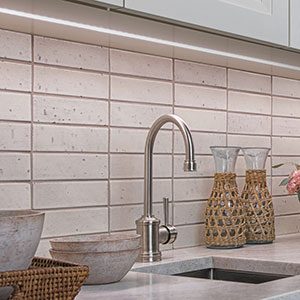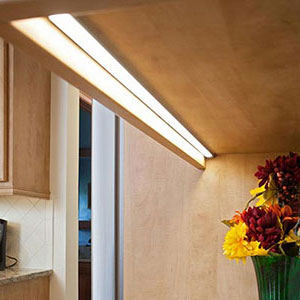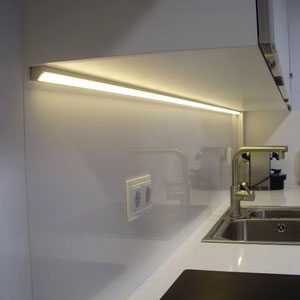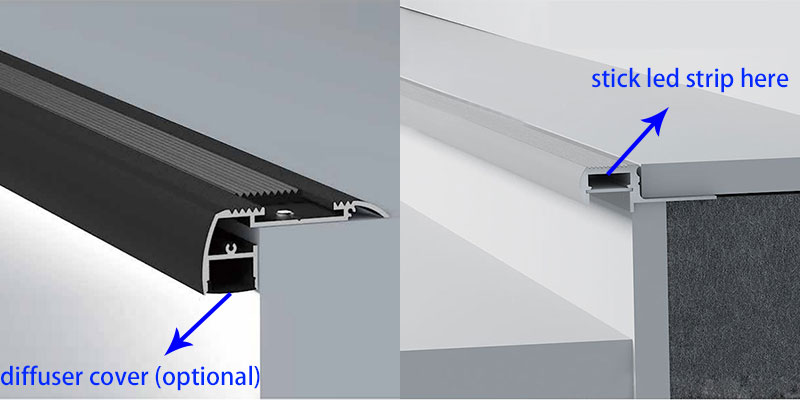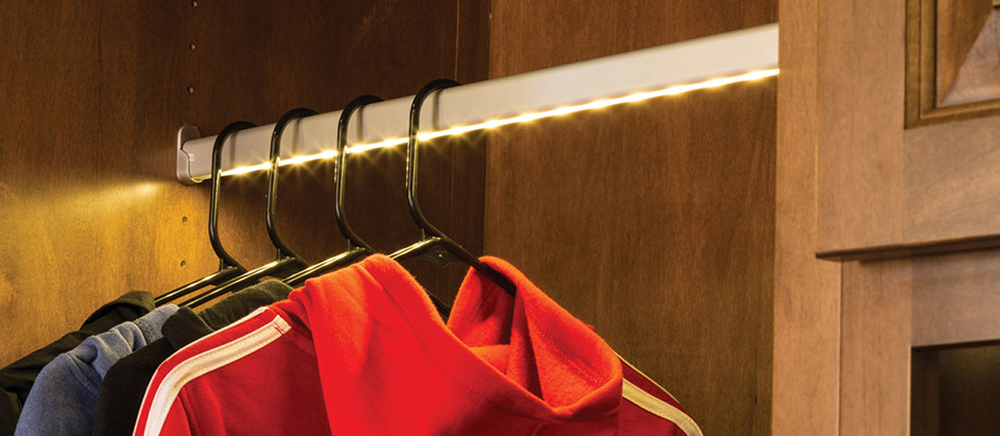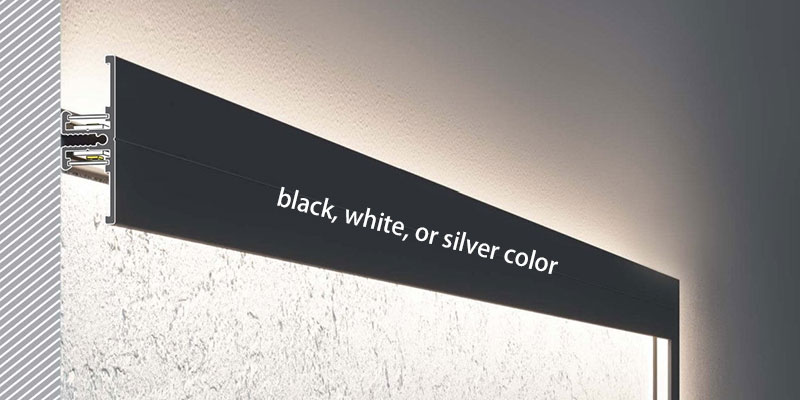In modern lighting design, the quest for unique and striking lighting results is a common pursuit of designers and home decorators. In this pursuit, LED strips and LED channels become a golden combination. This combination not only brings excellent lighting effects to indoor and outdoor spaces, but also creates creative and individual light solutions for designers.
Let’s delve into the wonderful combination of LED strips and LED light channels to understand why they have become an important part of modern lighting design and how to make the most of their potential to inject endless creativity into our spaces.
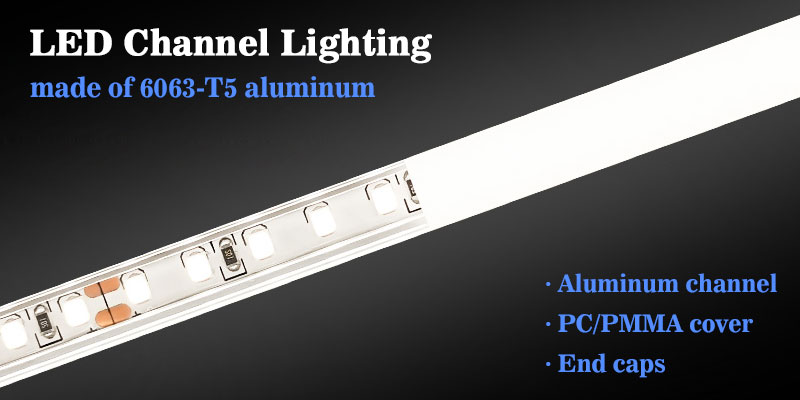
The Importance of LED Channel in Lighting Design
Channel lighting is a design concept that achieves dotless, uniform, soft, and aesthetic lighting effects by installing LED strips inside. This design approach uses an even distribution of light to provide overall illumination, allowing consistent light levels throughout the area and reducing differences in light and darkness.
As a type of light diffuser, LED channel plays a crucial role in modern lighting designs, especially in combination with LED strip lights. Here are the advantages of using channel lighting:
- Provide light diffusion and even distribution
- Create a soft, comfortable lighting environment
- Hide and protect LED strips, ensuring their safety and longevity
- Channels made of high-quality aluminum act as heat sinks for LED strips
- Enhance the durability of lighting fixtures
- Create lines of light in home and commercial spaces
- Get an aesthetically pleasing installation
- Universal for various lighting designs
| Aspect | LED Strip Lighting | LED Strip Channel Lighting |
| Installation | LED strips directly installed | LED strips installed within dedicated channels |
| Light Distribution | Direct light source with visible patterns and shadows | Indirect, diffused lighting with reduced glare and even distribution |
| Design Flexibility | Flexibility to adjust and arrange LED strips | Provide a more consistent and structured lighting design |
| Durability | LED strip is exposed to the air and easily accumulates dust | The channel provides protection for LED strip |
| Maintenance and Accessibility | Not easy to clean | Easy to clean |
Under Cabinet LED Channel Lighting
Under-cabinet lighting is a key consideration in kitchen island design. Choosing the right under cabinet lighting fixture is critical to creating a comfortable, functional, and aesthetically pleasing kitchen environment. The following explains why LED strip channels are the most suitable type for low profile under cabinet lighting.
LED strip channel provides an even and soft lighting effect, ensuring that the entire under-cabinet area is properly illuminated. This means that instead of glare or shadows, your worktop or display area is fully illuminated.
Whether you are designing your house or looking to remodel and upgrade your kitchen, LED strip light channels are a lighting option worth considering. Recessed LED channels in cabinets or counters can create a clean, modern look. Surface mount LED channels beneath the cabinets allow light to shine directly onto the worktop, providing plenty of brightness and visibility.
In addition, if you want wider lighting coverage, you can choose to install 45-degree LED channels in the corners underneath the kitchen cabinets. Choose the LED channel that suits your needs and make your under cabinet lighting even better.
Stair Nosing LED Channel Lighting
Stair nosing LED profile channel provides an innovative and modern lighting solution for residential and commercial spaces, it combines the functionality of a traditional stair nosing with the added benefit of integrated LED lights. This innovative solution not only improves safety and visibility, but also adds an aesthetic element to the staircase.
What is LED stair nosing profile?
Stair nosing is a specialized trim or decorative strip installed at the edge of each step of a staircase. It usually extends slightly beyond the step edge to help prevent trips and falls by providing visual and tactile cues for foot placement.
The primary function of the LED stair tread nosing is to improve the safety of the stairway by reducing the risk of slipping or tripping. The extended edge of the flange provides an additional surface for a firm foothold and helps define the edge of each step, especially in dimly lit areas or in environments with low visibility. This is particularly important in public buildings, commercial spaces, and high-traffic areas.
Why choose aluminum mental LED stair nosing?
Stair trim molding is available in a variety of materials, such as wood, metal, rubber, or PVC, to match the overall design and style of the staircase. The sturdy aluminum mental material stands out among them. It can withstand heavy foot traffic and is less prone to damage than other materials. This makes aluminum stair nosing a durable solution for modern stair lighting.
And metal LED stair nosing is relatively low-maintenance. It resists rust, corrosion, and moisture, suitable for both indoor and outdoor applications. Cleaning the railing is as easy as wiping it down with a damp cloth.
How to install stair nosing led channel?
The installation of LED stair nose trim is an important consideration to ensure the safety and functionality of stairs in residential, commercial, and public spaces. It can be installed during the construction of a new staircase or retrofitted to an existing staircase.
Wardrobe Closet Rod LED Channel Lighting
Combining LED strip lighting, LED channel, and closet rod together is a special form of channel lighting, especially for closet or clothing display areas. Installing LED closet rods inside a wardrobe makes the entire closet more functional by providing a way to hang clothes while taking into account the function of lighting.
The lighted closet rod puts a diffusion mask on the LED strip light, so you can avoid harsh lighting when dressing. You can DIY LED closet light colors and control methods according to your preferences.
LED closet rod channel lighting installation steps:
- Install LED strip into the closet rod channel, and cover the diffuser mask
- Measure and determine the LED closet channel position
- Secure the bracket to the inside wall or top of the closet using screws
- Insert the LED closet rod into the bracket
- Connect the LED closet rod to the power source
How to determine the height of the LED closet rod profile:
Consider the need for hanging clothes and make sure there is enough space; consider the height of the wardrobe closet so that the LED closet rod is within an easily accessible height range for hanging and removing your clothes.
Decorative Wall Sconce LED Channel Lighting
Modern interior design tends to be clean and smooth lines. LED light strip channel offers a modern, stylish alternative to decorative wall sconces. Their linear shape and compact design make them suitable for a variety of spaces, such as living rooms, bedrooms, bathrooms, hallways, and offices.
With proper layout and design, the continuous light produced by linear channels provides ambient, indirect or decorative lighting for walls. These easy-to-install led tape light channels can be flexibly mounted on walls, horizontally, vertically, or diagonally.
Typically, linear wall light channels create upward or downward lighting. Upward lighting wall sconces highlight wall textures, decorative or artwork; downward lighting wall sconces are used to illuminate specific areas of the wall, such as hallways, stairways, or work areas.
Some linear wall light channel designs can provide both upward and downward lighting. This means that the LED channel can emit light up and down, creating a lighting effect in both directions on the wall at the same time. Up and down lighting can provide a more balanced and comprehensive illumination, making a space look brighter, more open and more comfortable.
Will painting on the aluminum surface affect the quality of the LED channel?
Sometimes the only color option available for your desired LED channel is silver (aluminum natural color), and painting the aluminum channel to match the decor is a common solution. By choosing the right paint color and texture, you can change the look of the LED channel to harmonize with your interior design.
Before painting, make sure you select the proper type of paint, proper aluminum channel surface treatment, and follow the manufacturer’s recommendations during construction to best protect the quality and performance of your LED channel.
Do All the LED Channels Eliminate LED Strip Hot Dots?
By mounting LED strips in aluminum channels you will get light without dots, does this apply to any LED profile? LED channels can help eliminate the effect of dots on LED strips, but the exact effect depends on the design of the aluminum channel, and the characteristics of the LED strip.
The effect of dotted light can be effectively eliminated or diminished by mounting the LED strip in an LED channel. The diffuser of the LED channel is usually made of PC or PMMA or silicone material, and the LED light is constantly reflected, diffused, or refracted as it passes through the diffuser, thus achieving uniform light.
However, to get the effect of no dotted light at all, you need some consideration. We have provided you with some examples to help you choose the best LED channel.
*The following LED channel lighting all uses 60LEDs per meter 5050 LED strip as the light source.
Comparison between different channel shapes
I used three shapes of LED channels (3030 corner channel, 3535D U channel, 17*15mm U channel, ) with PC milk white diffusion cover to test the lighting difference between them. The results show that for the LED channel with the PC milky white cover, a spotless effect is achieved in both shallow and deep aluminum profiles.
The linear distance of the strip from the diffuser: 20mm; 28mm; 15mm (arch-shaped thick diffuser).
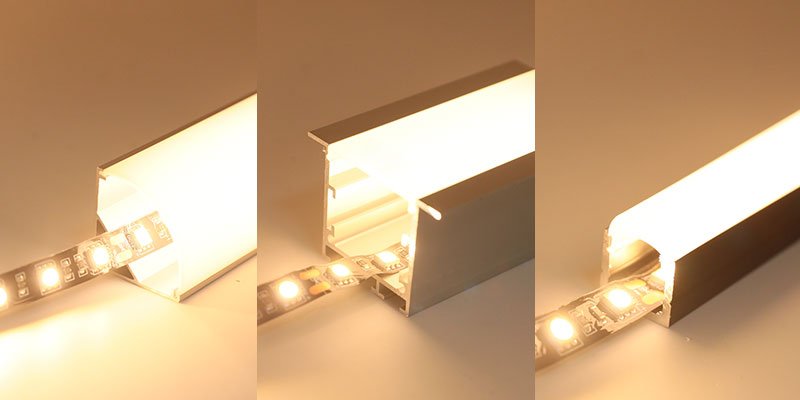
Comparison of different diffuser colors
In the 1707 falt channel using 60 density led strip, you will see the fixture through the diffuser cover. The second one is the PMMA semi-clear diffuser, although the picture looks like continuous light, in fact, the naked eye can still see the dot light.
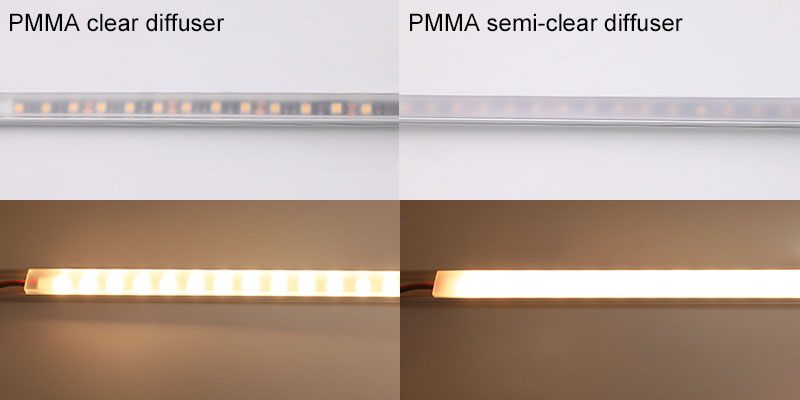
Comparison of different diffuser shapes
A 1616 corner black led channel diffuses 60 LEDs strip light, you can see the spot, but it does not block too much light, we can still see the obvious brightness.
Arc diffuser and angled diffuser in the corner channel are not much different. But the V-shape diffuser has more space left for light scattering, so the light uniform effect is slightly better.
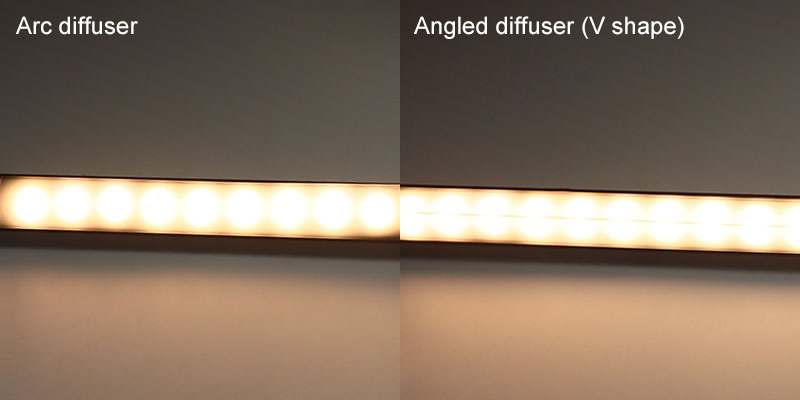
Best LED Channel
To achieve a completely spotless and dotless strip light effect, a milky white diffuser cover is the optimal choice, regardless of the type of LED channel. For applications where the naked eye can see directly into the LED channel fixture, such as closet rod lighting, eliminate as many LED hot spots as possible.
And for under cabinet lighting and stair front edge lighting, LED channel lighting is downward and out of our line of sight, we can pursue higher brightness, and while softening the LED light, consider a frosted or translucent diffuser to match your LED channel.
| LED Channel Diffuser Type | Light Transmittance |
| Clear diffuser | 80%-90% |
| Semi-clear / translucent diffuser | 70%-80% |
| Opal / milky white diffuser | 60%-65% |
| Black diffuser | 30%-35% |
